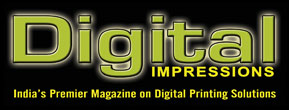In the evolving world of art and technology, digital printing has emerged as a transformative force. Bridging the gap between traditional artistry and modern innovation, digital printing has opened new doors for artists, designers, and enthusiasts. From fine art reproductions to innovative installations, digital printing is not just a tool but a medium that expands the boundaries of creativity.
Digital printing originated as a method to reproduce documents and photographs efficiently. However, its potential for high-quality reproduction and customization quickly attracted the attention of the art world. By the late 20th century, artists began experimenting with digital printers, and what started as a practical tool soon became a creative medium.
The turning point came with advancements in inkjet and laser printing technologies. These innovations allowed for high-resolution, color-accurate prints on various substrates, from paper and canvas to metal and glass. The introduction of archival-quality inks and materials further solidified digital printing’s role in fine art, enabling prints to last for decades without fading.
Modern digital presses have become indispensable in the art world, offering a level of precision and versatility unmatched by traditional methods. Advanced digital presses such as the HP Indigo, Canon imagePRESS, Fujifilm Revoria, and Epson SureColor series, among many others are capable of producing gallery-quality prints with remarkable detail and vibrancy. These machines utilize cutting-edge technology like multi-pass printing and expanded colorgamuts to accurately reproduce even the most intricate designs.

Digital presses have revolutionized the reproduction of fine art by capturing every nuance of the original piece. High-resolution scanners paired with digital presses ensure that the subtleties of brushstrokes, texture, and color transitions are faithfully reproduced. These machines can print on a variety of surfaces, including textured art paper and canvas, mimicking the tactile quality of the original artwork.
One of the most significant advantages of digital presses is their ability to create highly customized works. Artists can now produce personalized art pieces, limited editions, or variations of their designs tailored to specific audiences. The ability to print on demand reduces waste and allows artists to experiment with designs without committing to large production runs.
Digital presses have expanded the possibilities for mixed media art by printing on unconventional substrates like fabric, metal, and acrylic. This versatility enables artists to integrate digitally printed elements into sculptures, installations, and wearable art, pushing the boundaries of traditional art forms.
For large-scale art projects such as murals or public installations, digital presses offer unmatched efficiency and quality. Wide-format digital printers can produce vibrant, weather-resistant prints on materials like vinyl or fabric, allowing artists to create impactful works that withstand environmental challenges.
Digital presses seamlessly blend traditional artistic techniques with modern technology. For instance, an artist can hand-paint elements of a piece, scan it, and then use a digital press to enhance or replicate the work on a larger scale. This hybrid approach combines the authenticity of traditional methods with the precision and scalability of digital technology.
As environmental concerns grow, digital printing offers a more sustainable alternative to traditional methods. Many digital printers use eco-friendly inks, and the technology minimizes waste by printing on demand. This “print only what you need” approach reduces overproduction and resource consumption.
Digital printing eliminates many constraints of traditional techniques. Artists can experiment with colors, textures, and materials without the limitations of manual processes. The ability to create intricate designs and scale them up or down adds to the creative possibilities.
Digital printing seamlessly integrates with other technologies like graphic design software, 3D modeling, and augmented reality. This synergy allows artists to push the boundaries of innovation, creating works that blend the physical and digital worlds.
Digital printing has fueled the growth of corporate and interior art. Businesses and homeowners can customize spaces with digitally printed murals, wallpapers, and decor that reflect their unique tastes.
The future of digital printing in art is brimming with possibilities. Emerging technologies like AI and machine learning are poised to enhance the creative process further. AI-generated art, combined with digital printing, can produce unique pieces that challenge traditional notions of authorship and originality.
Additionally, the development of new materials and inks will expand the range of substrates, enabling even more creative applications.
Sustainability will remain a focal point, with ongoing efforts to reduce the environmental impact of digital printing. Innovations in biodegradable inks and recyclable materials will align artistic production with global sustainability goals.
Digital printing has undeniably transformed the art world, offering tools and opportunities that were once unimaginable. It has bridged the gap between technology and creativity, empowering artists to explore new horizons. While challenges remain, the benefits of digital printing far outweigh the drawbacks, making it an indispensable part of modern art.
As technology continues to evolve, so too will the potential of digital printing. From fine art to street art, from personal projects to commercial endeavors, digital printing will continue to shape the way we create and experience art. In this fusion of innovation and expression, the possibilities are truly limitless.
- Team DI
|

